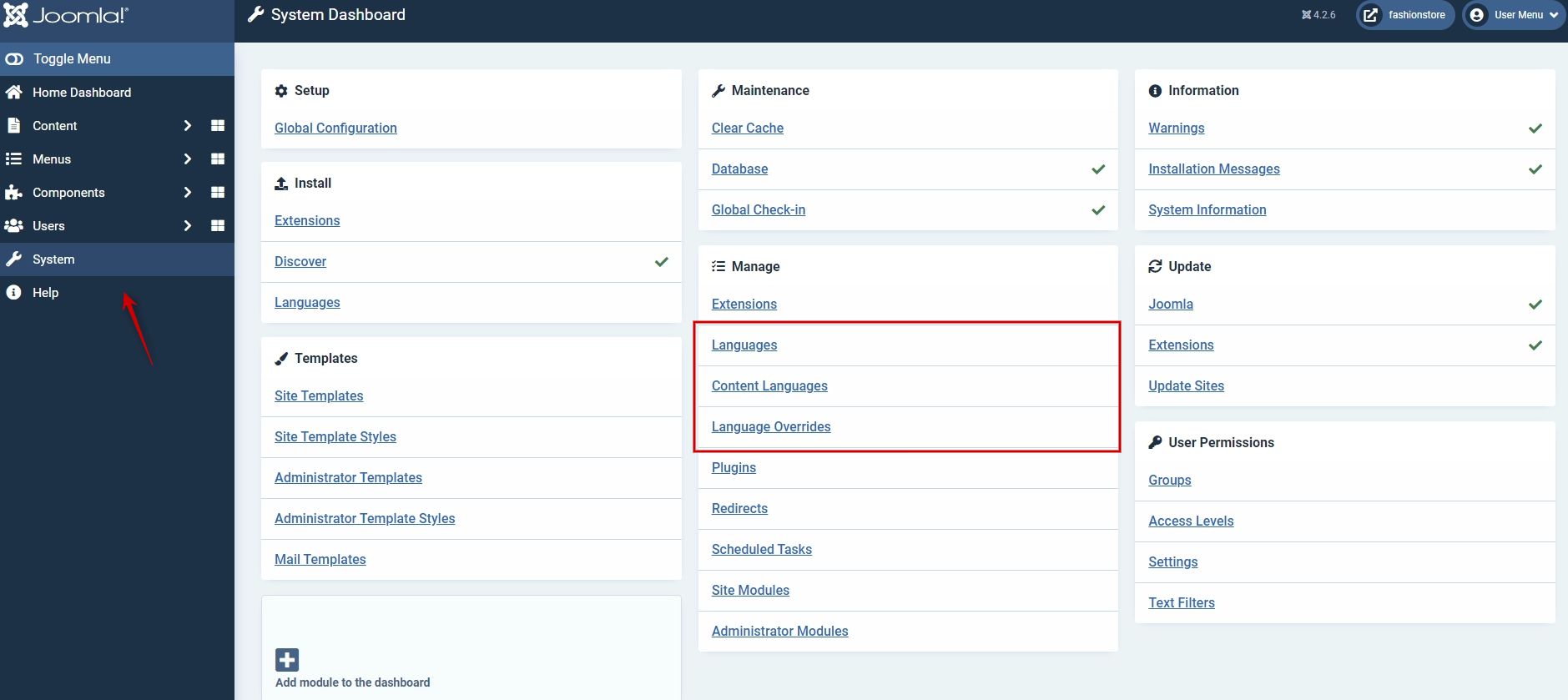Joomla 4.2.6 + Virtuemart 4.0.12 + SP Builder 3.8.9 Documentation
Extensions
The Five Types of Extensions
Components
You can think of Components as applications. These often provide complex functionality. Examples of Components include image galleries, online shopping carts and membership sites. These are often quite complex and require that you carefully read the supplied documentation.
Examples: Content [com_content], Banners [com_banners], Contacts [com_contact], News Feeds [com_newsfeeds] and Web Links [com_weblinks].
Management feature: Admin head menu > Components > Contacts for com_contact.
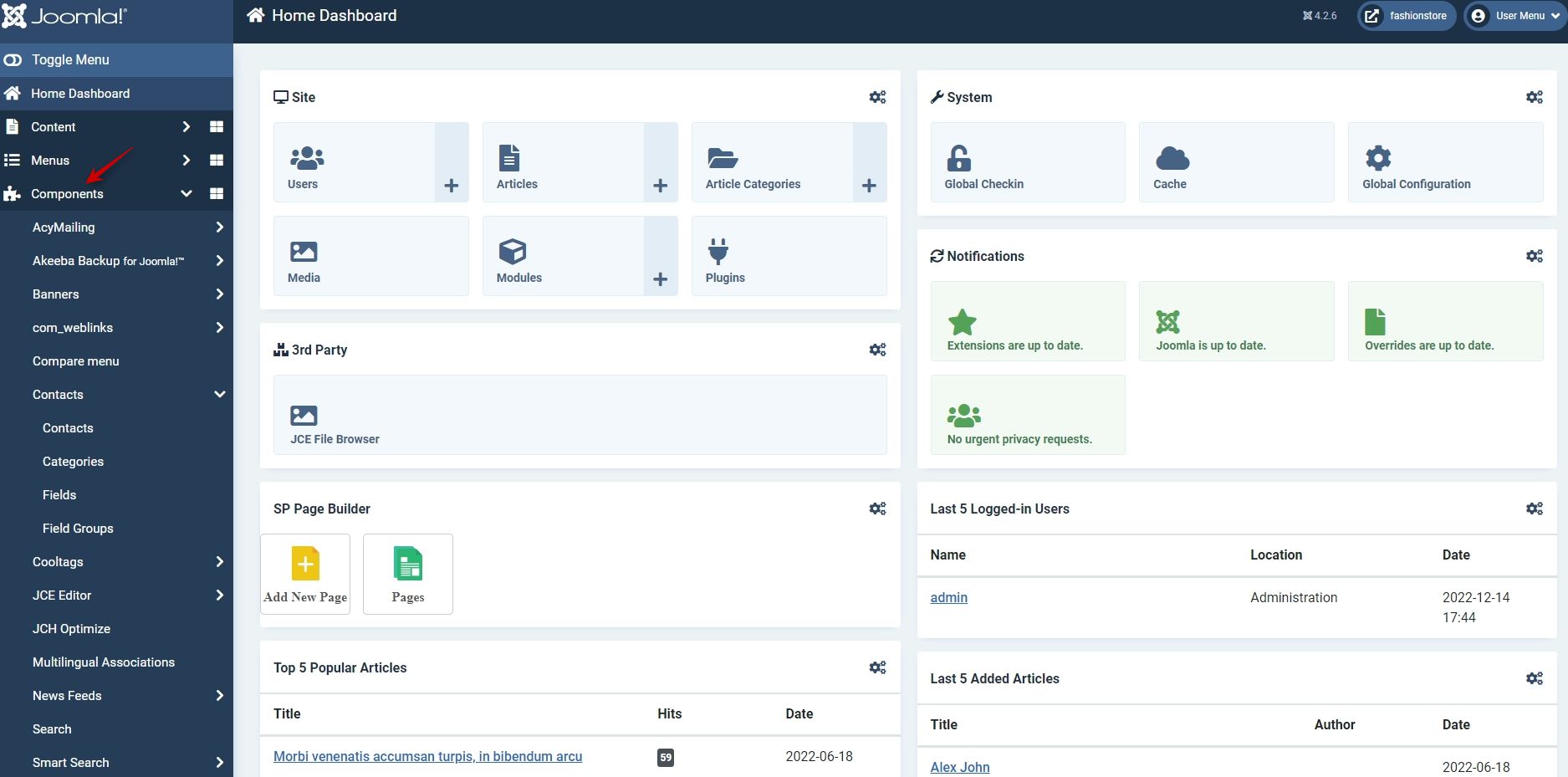
Modules
We have already explored the Modules. As you know, they are managed through the Module Manager and provide a way to manage and display secondary content on your website. Examples of Modules are navigation menus, search boxes and registration forms.
Examples: Banners [mod_banners], Menus [mod_menu], Who's Online [mod_whosonline].
Management feature: Admin head menu > Extensions > Modules.
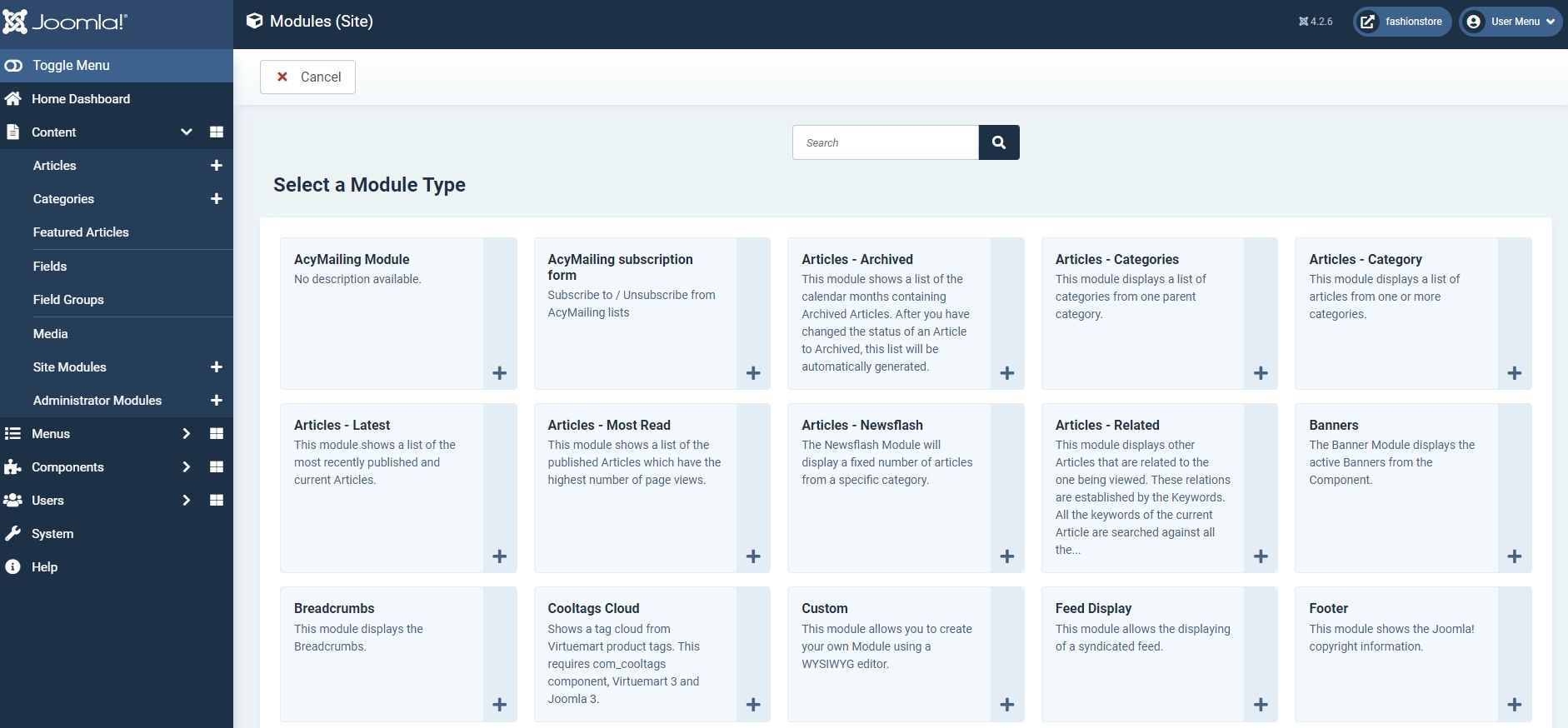
Plugins
As their name suggests, Plugins add content or functionality to a page or content item. Some Plugins work in the background of a page and can add additional code, such as Google Analytics tracking. Other Plugins may be activated within a specific type of Article or Module, for instance to provide commenting to an Article.
Examples: Content - Load Modules, Editor - TinyMCE.
Management feature: Admin head menu > Extensions > Plugins.
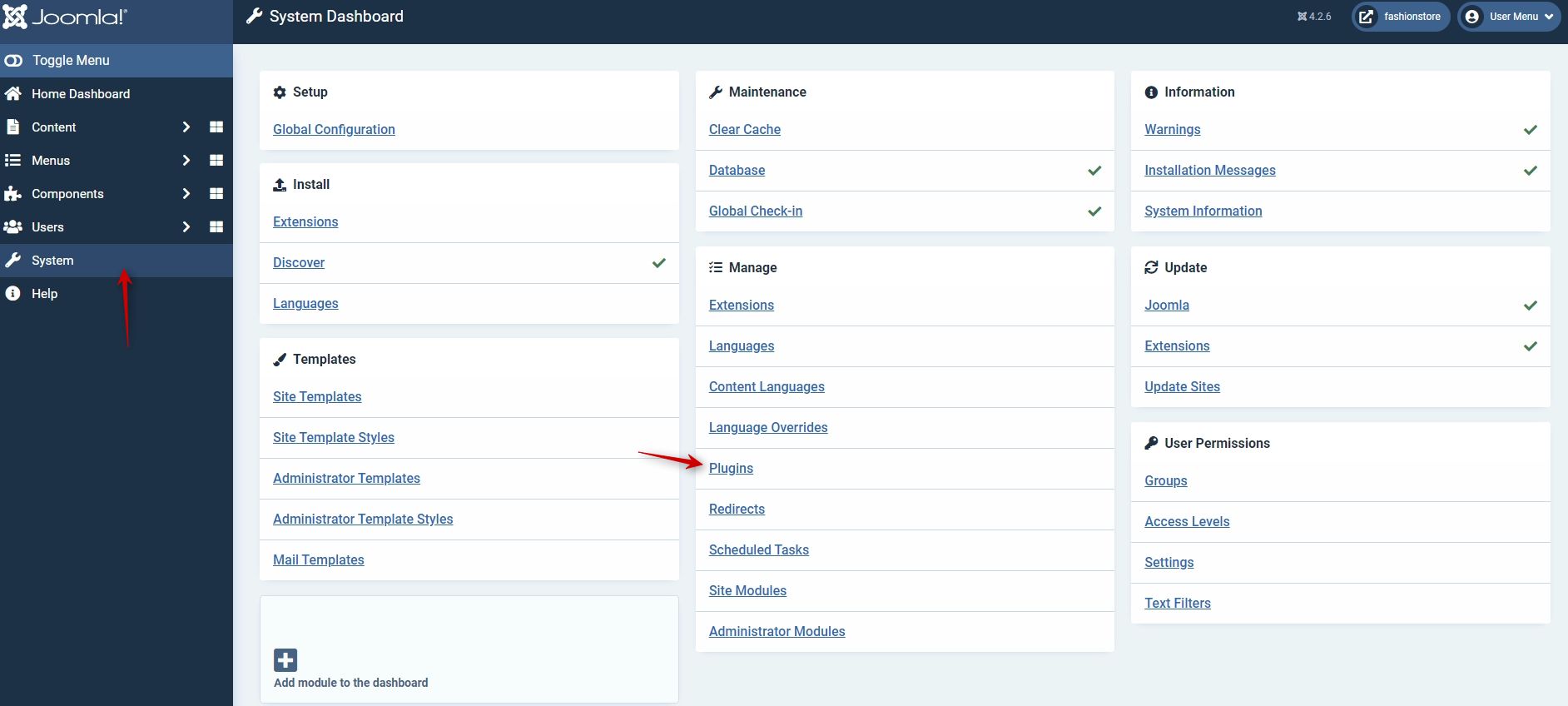
Templates
You are also already familiar with Templates, which provide different layouts for a website and are managed through the Template Manager.
Management feature: Admin head menu > Extensions > Templates.
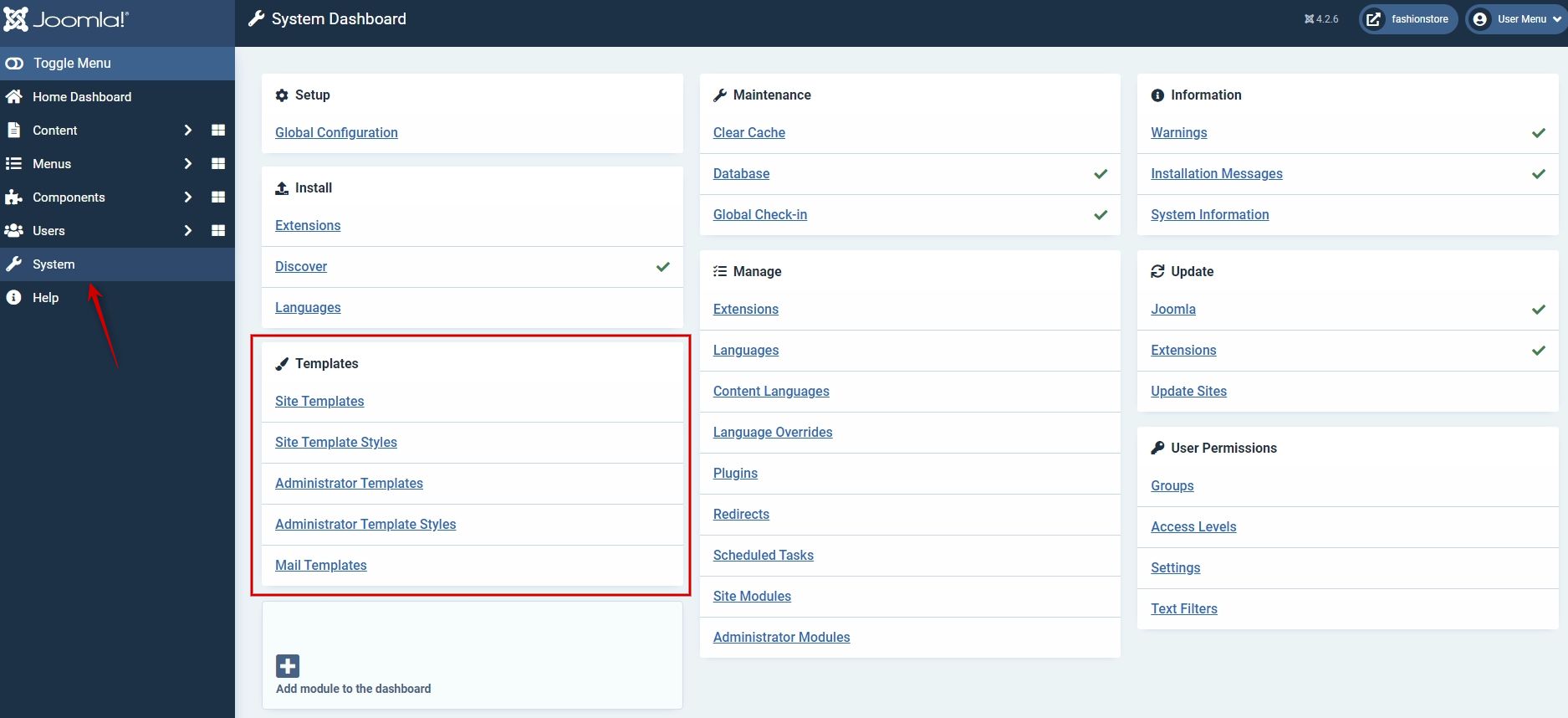
Languages
There are two considerations when it comes to multilingual Joomla websites. The first is the default text that Joomla outputs in various places. The Language Manager page in Administrator allows you to install language packs and change the default language of the site. The second consideration for multilingual sites is creating versions of each content item for each required language and setting the site up to allow visitors to display their desired language.
Management feature: Admin head menu > Extensions > Language[s].
